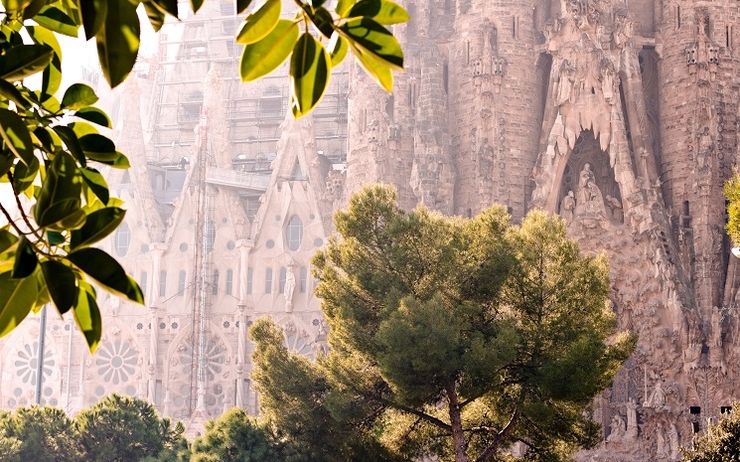The first stone of this iconic Barcelona building was laid in 1882. When completed, it will be the tallest Christian church in the world. But the end date of the work is still undefined.
The Sagrada Familia is one of the most visited monuments in Spain, and remains inseparable from the Barcelona panorama. This basilica with its unique architecture is a true work of art. Five generations of Barcelonans have witnessed the evolution of this impressive project, born in the mind of the famous Catalan architect Antoni Gaudí. Current construction officials hoped to see it completed in 2026, the centenary of Gaudí’s death, but the stoppage of work during the pandemic made this goal difficult to achieve.
Sagrada familia: a unique and impressive work
In 1881, a certain Josep Maria Bocabella decided to acquire land in Eixample in order to build an expiatory church (totally financed by the alms of the faithful), which would pay homage to the Holy Family, the Sagrada Familia, of Saint Joseph, the Virgin Mary and Jesus. The project was entrusted to the architect Antoni Gaudí, who imagined an imposing temple made up of five naves and eighteen towers: twelve to represent the apostles, four for the Evangelists, one for the Virgin Mary and finally the highest tower. in the center, to symbolize Jesus Christ.

The work conceived by Gaudi is filled with religious and mystical references, as well as elements inspired by nature. The three facades of the temple symbolize three stages in the life of Christ: the Nativity, the Passion and the Glory. The facade of the Nativity and the crypt of the basilica, built during Gaudí’s lifetime, were recognized as World Heritage by Unesco, for their unique architecture, and to reward the creativity and innovation of this construction.
The brand of Antonio Gaudí
The construction of the Sagrada Familia was the most important project for the modernist architect. Although Gaudí took care of many other constructions, he dedicated the last twelve years of his life exclusively to the Church for the Holy Family. Aware that to carry out such a project, many years would be necessary, Gaudí set up a construction in phases vertically, with entire facades, instead of a classic construction horizontally. When asked when this imposing sanctuary would be completed, the architect reportedly replied that his client (God) was in no hurry.

The time taken to build the temple can be explained by various reasons. On the one hand by the project itself, ambitious and innovative, and on the other hand by various historical events. The complexity of the construction comes from its height (the basilica should reach 172 meters high when completed), and from the fact that the church has no straight line inside. Indeed, Gaudí considered that the straight line was attached to Man, while the curves came from God. During the Civil War, Gaudí’s plans were lost during a fire, and the progress of the work was slowed down during this period. In addition, the work of the Sagrada Familia is financed exclusively by donations and by visitors. In 2020, the exceptional closure of the Temple meant a shortfall and a further delay in the works.

– .

